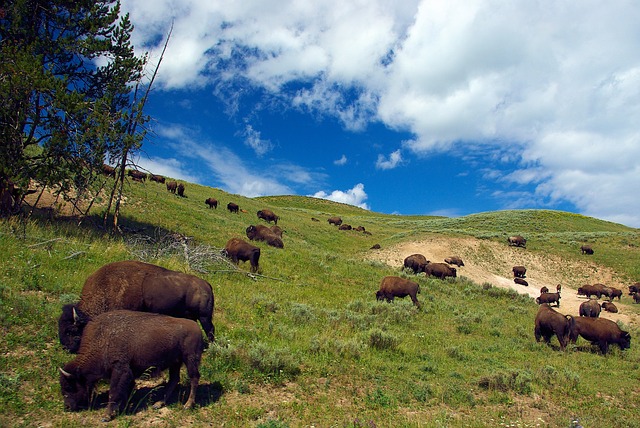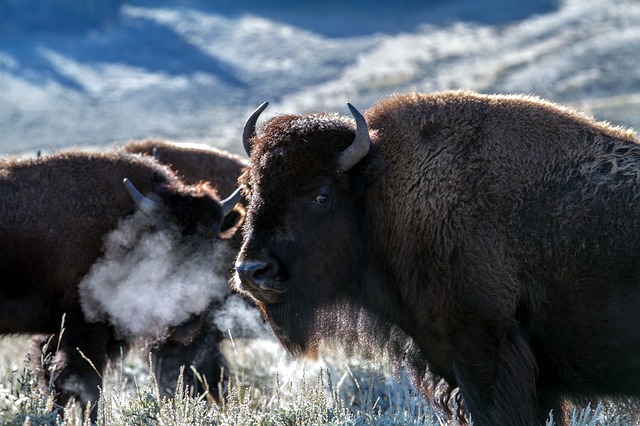
- Inspiring People -
- 6mins -
- 331 views
Bison return to the Rosebud Indian Reservation
The Sicangu Lakota Oyate, the Native nation living on the reservation in South Dakota, released 100 American bison onto part of an 11,300-hectare (28,000-acre) pasture, where their ancestors roamed for millennia.
Bison return to the Great Plains
The Sicangu Lakota Oyate, the Native nation living on the Rosebud Indian Reservation in the U.S. state of South Dakota, released 100 American bison onto part of an 11,300-hectare (28,000-acre) pasture. The project is a collaboration between the Sicangu Oyate’s economic arm, REDCO, the U.S. Department of the Interior, and WWF. Over the next five years, the leaders of the Wolakota Buffalo Range project hope to expand the herd to 1,500 buffalo, which would make it the largest owned by a Native nation.
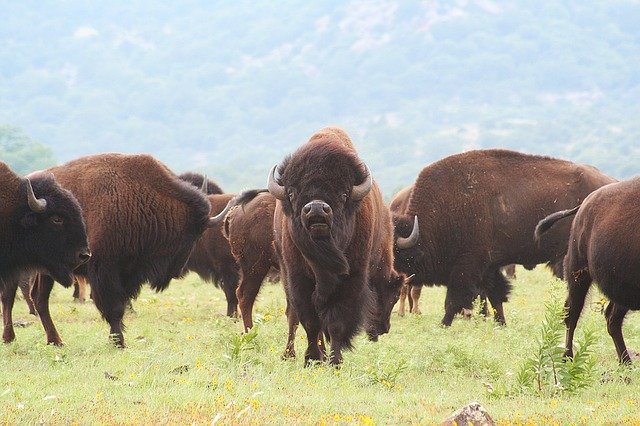
Bison return to land where their ancestors had run for thousands of years
The bison circled four times around the holding pen, before the lead animals took them into the 3,400-hectare (8,500-acre) pasture, their new home on the Rosebud Indian Reservation in the U.S. state of South Dakota. The thunder of 400 hooves as they crossed through the gate gave way to the whir of cameras and ululations from the crowd, perhaps 20 people gathered to see the return of the bison.
Out in their new pasture, the animals loped, moving in unison as if one organism. Then, they slowed and wheeled to the left against a backdrop of a few lonely trees on a blanket of tan grass stretching to distant hills. They seem to fit into the landscape, as if they’d always been there and always would be.
It was land where their ancestors had run for thousands of years, where they had been central to the success of the Great Plains’ nations, anchoring their cultures, prescribing their movements and filling their bellies.
Editor’s Note: This article is an excerpt from a much longer, far more in-depth article written by John C. Cannon for Mongabay, the online resource for news and inspiration from Nature’s Frontline. Story continues below…
Source: Mongabay
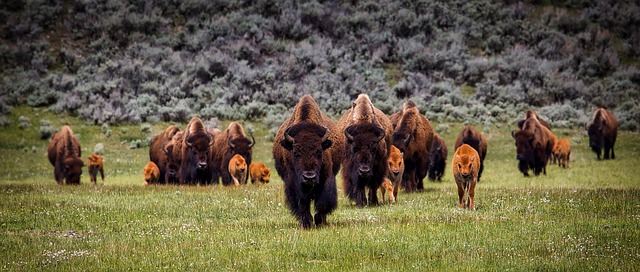
By 1889, only about 1,000 bison remained, many in zoos or privately owned herds
At their peak, an estimated 30 million bison grazed North America’s Great Plains, the region that drapes the center of the continent, from the Mississippi River to the Rocky Mountains. They were a keystone species in the vast ecosystem and a foundational food source for more than a dozen Native American nations living there.
But that was before a concerted campaign, backed by the U.S. government, to eliminate the bison in the mid- to late 1800s all but succeeded — a genocidal swipe aimed at bringing these largely nomadic cultures to heel and opening up the West to Euro-American expansion, farming and settlement.
By 1889, only about 1,000 bison remained, many in zoos or privately owned herds, according to the U.S. Fish and Wildlife Service.
The disappearance of North America’s largest land animal forever changed the makeup of these societies and the landscape itself. Farms and fenced-off ranches subsumed what had seemed to be a limitless prairie. Game disappeared, and with it the nomadic way of life of the Lakota (also known as the Teton Sioux) and other Native nations.
By the turn of the century, most of the Plains Nations had been forced onto reservation land, into a foreign and sedentary way of life that decimated these societies. Today, nearly 150 years after the “Indian Wars” of the late 19th century, poverty, unemployment, drug use, depression and suicide still hamper reservation communities at rates much higher than in the broader U.S. population.
But with this return of the buffalo to Rosebud Reservation, home of the Sicangu Lakota Oyate, proponents of the Wolakota Buffalo Range project hope to turn back that trend.
Source: Mongabay
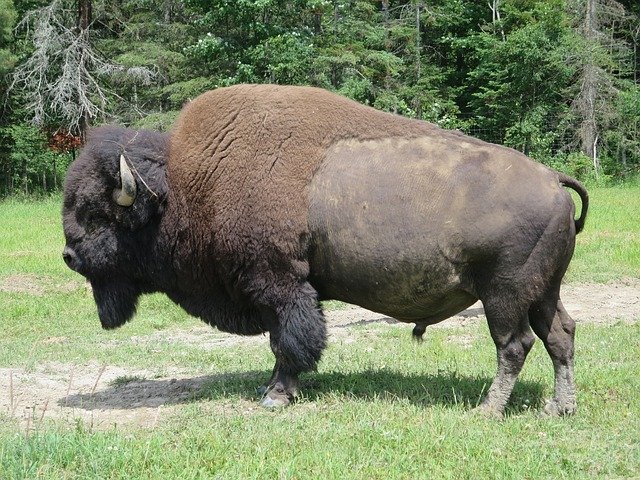
The arrival of the buffalo marks a new beginning for the Sicangu Oyate
“The sacred relationship between Native nation communities and the buffalo is part of a shared story of strength, resilience and economic revitalization,” Little Elk, the architect of the Wolakota project, said in a statement from WWF. “The arrival of the buffalo marks a new beginning for the Sicangu Oyate, where cultural, ecological and economic priorities are equally celebrated and supported and are of great benefit to our community.”
The bison released on the Rosebud pasture in October came from Badlands National Park in South Dakota and Theodore Roosevelt National Park in North Dakota. The move was part of the Bison Conservation Initiative run by the U.S. Department of the Interior (DOI), which oversees the park service.
It aims to build up ‘large, wild, connected, genetically diverse and healthy bison herds.’ Providing “surplus” animals to Native Peoples is one way the initiative’s backers hope to continue growing the animal’s population while also helping to reestablish that cultural connection with Plains Nations.
Source: Mongabay
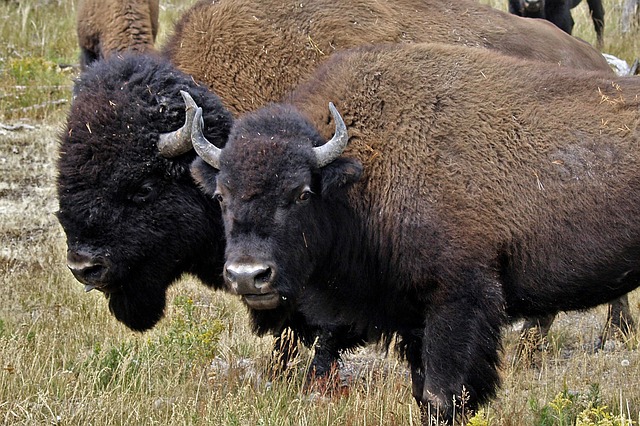
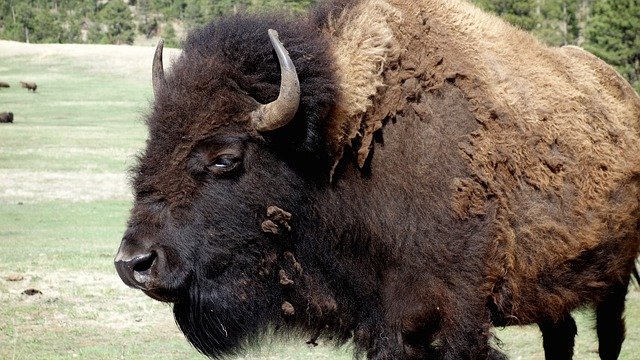
Genetics are a concern for the American bison
The small size of most herds remains a concern. All bison alive today are descended from the 1,000 that survived at the end of the 19th century, pushing the species through what scientists call a genetic bottleneck. That means they have a relatively small pool of genetic diversity to draw from, especially for a species that had evolved to number in the tens of millions.
The reproductively prolific bison also have relatively limited areas of land into which they can expand, Jorgensen added.
“If they are fenced in,” said Dennis Jorgensen, a wildlife biologist and WWF’s bison initiative coordinator, “they are going to fill that landscape.”
That means the species’ existence today remains threatened — not by hunters as they once were, but by the perils of declining genetic diversity and the threat of inbreeding.
Rather than sell the animals or send them to market, the DOI’s bison initiative looks to build up numbers and genetic diversity by providing the animals to Native nations.
Source: Mongabay
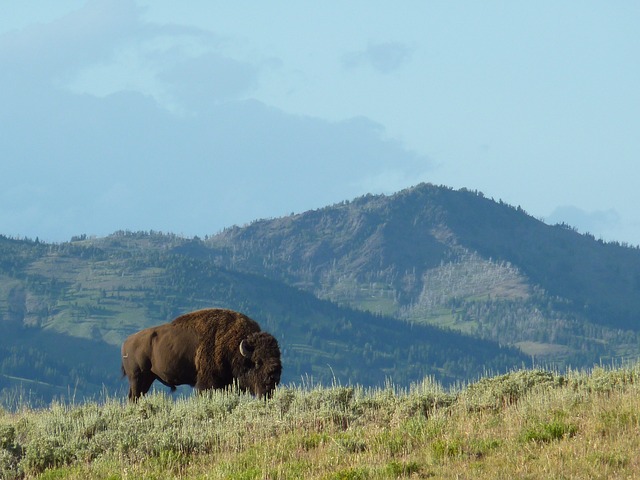
Bison and prosperity on the plains
Bison herds on the Plains once reached almost incomprehensible numbers. Stephen E. Ambrose writes in his book, Crazy Horse and Custer: The Parallel Lives of Two American Warriors, that a U.S. military officer traveling through the Great Plains in the 1830s reported “as far as the eye could reach the country seemed blackened by innumerable herds.”
True ecosystem engineers, restive with sharp hooves, and weighing a metric ton (2,200 pounds) or more, bison sculpted the seemingly featureless prairie into microhabitats that supported countless birds, mammals and reptiles.
Jorgensen said that ornithologists have noted the superlative bird diversity on Montana’s Fort Belknap Indian reservation, which has had a herd of bison since the 1970s.
The restoration of those dynamics, beginning with the Wolakota range, is one of the goals of returning the bison to the landscape.
Editor’s Note: This article is an excerpt from a much longer, far more in-depth article written by John C. Cannon for Mongabay, the online resource for news and inspiration from Nature’s Frontline.
Source: Mongabay
